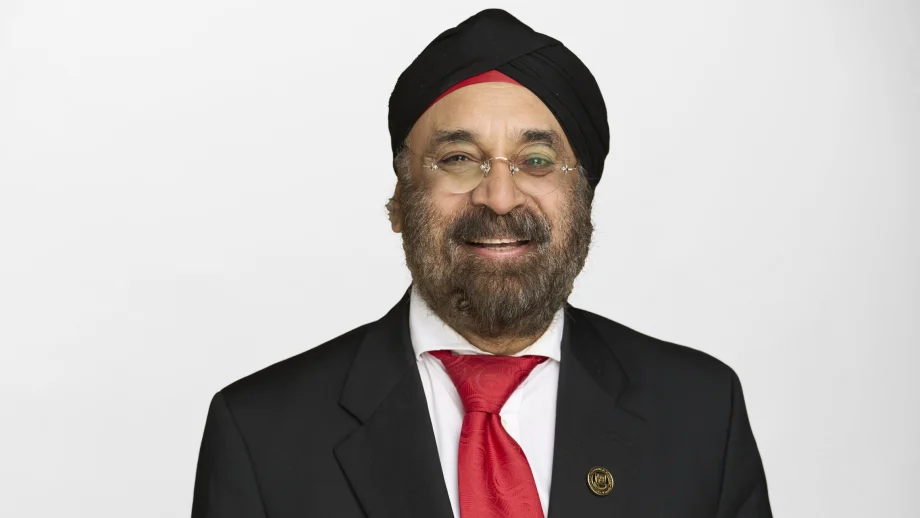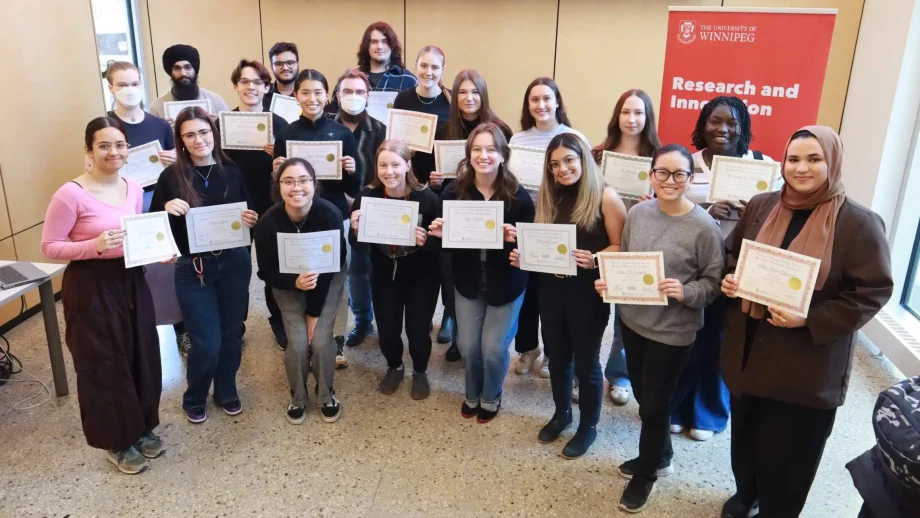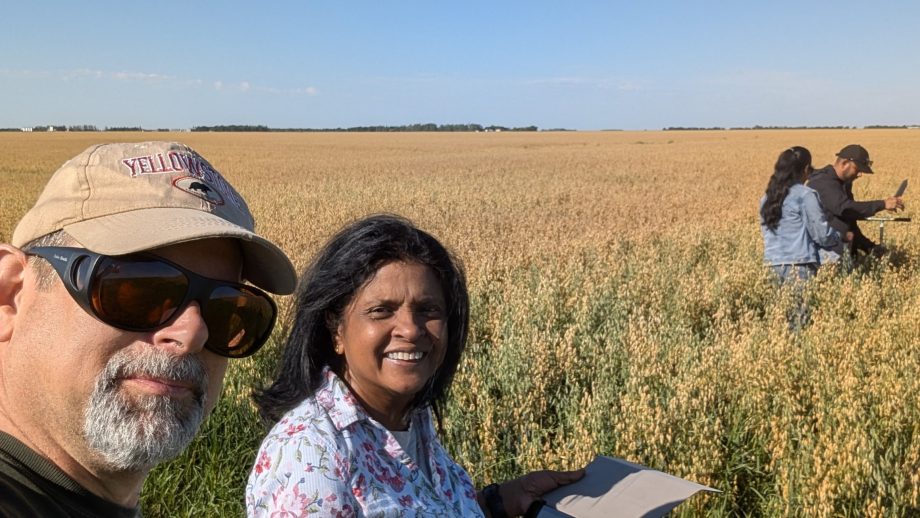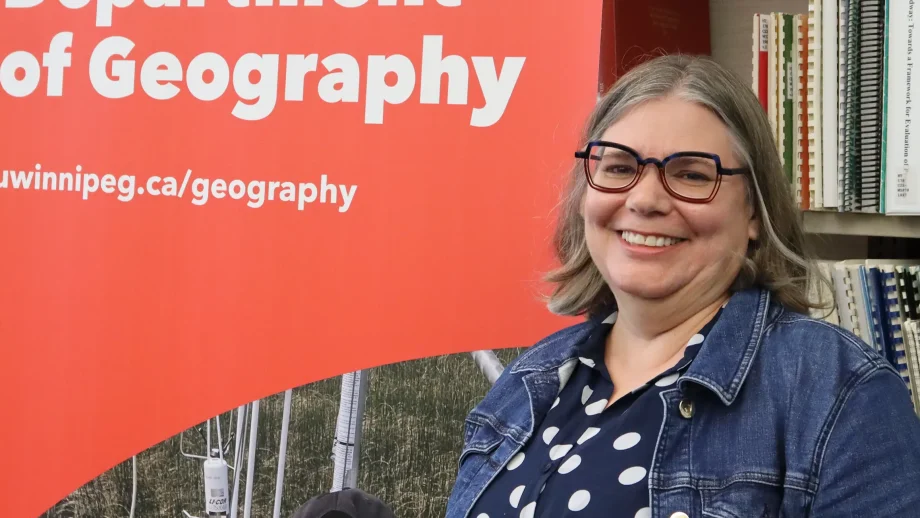
photo clockwise, Jesse Kuik, Stephanie Connell, Jessica Mollerup, Alexis Parkinson, Dr. Ed Cloutis and Krista Kubanek,©UWinnipeg
Seven unusual suspects from UWinnipeg participated in a simulated moon exploration mission that ended in Spain. The Canadian Space Agency (CSA), through the Canadian Space Agency (LEAD) program, provided funding to UWinnipeg’s resident star-man, Dr. Ed Cloutis for the CANMOON. This moon mission is designed to see how a lunar rover could detect the presence of resources that could be used to support human presence on the moon.
The undergraduate students, from across disciplines, learned to work together in a simulated, hands-on, four-week space mission that involved an international team of players.
The students spent the first two weeks of August 2019 at Western University, working with Western students on operating the rover.
“Our students were involved in using pictures and data from a number of scientific instruments to direct where the rover* should go and what kinds of investigations it should conduct,” explained Cloutis. “One of the project goals was to give UWinnipeg students a hands-on experience in working on an actual planetary mission. This experience can translate to any space mission project.”
They worked with three teams (planning, science, and field). Each team was made up of individuals from a range of disciplines including engineers, scientists from many fields (geography, physics, and biology) and from around the country, and the globe.
Stephanie Connell, (environmental studies and sciences) was one of the participants.
“Getting hands-on experience with planetary analogue missions is beneficial for students, considering there are no planetary exploration university programs currently offered in Manitoba,” she said. “I have always been interested in space science, which would be my main reason for what drew me to the simulated lunar rover mission.
Connell is also a research assistant for Cloutis in his Center for Terrestrial and Planetary Exploration Lab (C-TAPE), which has provided her with hands-on experiences in simulated rover operations, and field work.
The students had to learn to work with many moving parts and communicate ideas effectively to the diverse audience and different teams. This collaboration also exposed the students to a vast array of knowledge, and what working in a space mission is really like.
“You have scientists from all backgrounds with respect to biology, geology, geography, environmental science, remote sensing, and physics, providing a plethora of skills in order to run such a mission,” continued Connell. “In addition, students see what role the planning team of engineers play in the mission, how all these different areas are equally important for a mission, and how we can all work together as a team. The partnership between The University of Winnipeg and Western University provided insight on people’s areas of expertise, allowed me to interact with other students who share the same interests as me, and simulated what a real rover operation would be like.”
This was a common theme in the space mission experience. Jessica Mollerup (physics), who is a NASA funded visiting student from Western Washington University.
“Each team member brings their own unique experiences, expertise, and viewpoints to the table,” said Mollerup. “Every decision mission control makes benefits from the insight and collaboration of each individual team member. The importance of this sort of interdisciplinary teamwork, which leads to unparalleled opportunities and scientific discoveries.”
The students just recently returned from Lanzarote, Spain, for part two of their mission. They went to the actual field sites to compare details with their own eyes and examine what they saw via photos, and scientific instruments at Western via the rover.
“The goal of the field visit was to compare how exploring the moon with a rover compares to using astronauts,” noted Cloutis. “We wish to know how much better or quicker science could be done on the moon by astronauts versus rovers.”
“The field validation in Spain was helpful in terms of comparing what we could see with the panoramas that the rover took, and the zoom photos on its traverses, as well what we could see with the human eye as we did our astronaut traverses,” said Connell. “I feel that sending humans to the moon allows us better access to possible targets of interest for a sample return mission as there are limitations to what the rover can do.”
Krista Kubanek (integrated education program, geography, minor in physics) has been working in the Cloutis lab, in addition to this mission.
“Working in the C-TAPE lab has offered me a wide variety of experiences that have allowed me to increase my knowledge of planetary science (particularly spectroscopy) and collaborate with my peers on related projects,” said Kubanek. “This mission is only one of many that has allowed me to widen my understanding and curiosity.”
Kubanek plans to bring what she has learned from these missions to her classrooms, “I strive to inspire students to always remain curious, gauging their interest in topics such as space exploration to help them grow in their own passions”.
Alexis Parkinson (biology) was drawn to the mission because of her recent research with lunar materials and lunar exportation.
“It was interesting to not only conduct in-lab research regarding lunar exploration, but also to be a part of a mission control operation where we explored the lunar surface through rover opts, ” said Parkinson. “One of the highlights for me was putting to work the skills that I have developed while working in C-TAPE. Through the support and shared knowledge of my co-workers, lab technician, and of course Dr. Ed Cloutis, I’ve developed skills that I would never have expected to have without having this opportunity to work within C-TAPE and be involved in projects such as CANMOON.”
*A real rover was not used in this mission




